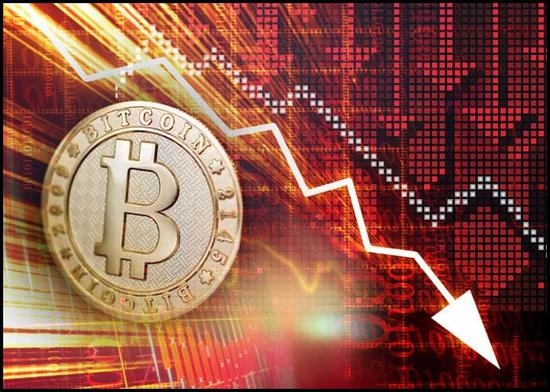Inflation's Shadow: Navigating Europe's Economic Tightrope (Meta Description: European Central Bank, inflation, Nagel, monetary policy, economic outlook, eurozone, price stability, interest rates)
Whoa, Nelly! The whispers about inflation are getting louder, and the European Central Bank (ECB) is right in the thick of it. Recent statements from ECB board member, Isabel Schnabel, and other prominent figures like Joachim Nagel, haven't exactly calmed the nerves. Their pronouncements, while seemingly optimistic, paint a picture far more complex than a simple "2% target is near" narrative. We're not just talking about numbers on a spreadsheet; we're talking about the real-world impact on your grocery bill, your mortgage payments, and frankly, your overall peace of mind. This isn't some abstract economic theory; it's the stuff that affects every single one of us – from the bustling marketplaces of Rome to the quiet villages of the Irish countryside. This detailed analysis takes a deep dive into the current inflationary pressures facing the Eurozone, exploring the ECB's strategies, the potential pitfalls, and what you, as a concerned citizen, need to understand. We’ll unpack Nagel's comments, examining the underlying economic realities and the challenges the ECB faces in taming inflation without triggering a recession. Get ready for a rollercoaster ride through the intricate world of monetary policy – buckle up, because it's going to be a bumpy but illuminating journey! We’ll delve into the historical context, analyze current data, and project potential scenarios, offering insights not found in the standard headlines. We'll also unpack the human side of inflation – the real-life struggles faced by everyday Europeans caught in the crosshairs of rising prices. This isn't just about economic jargon; this is about your life, your future, and your financial well-being. So, let's get to the bottom of this – together. This isn't your grandpa's economics lesson; it's a fresh, insightful look into the heart of Europe's current economic battle.
European Central Bank (ECB) and Inflation
The ECB's primary mandate is maintaining price stability within the Eurozone. Their target inflation rate is 2%, a goal seemingly within reach according to Nagel's recent pronouncements. However, the path to achieving this target is littered with potential obstacles. The current inflationary pressures are multifaceted, driven by a complex interplay of factors including the lingering effects of the pandemic, the war in Ukraine, and global supply chain disruptions. Simply put, it's a perfect storm. While Nagel's comments might suggest a degree of confidence, it's crucial to understand the nuances of the situation. His statement, while seemingly positive, doesn't negate the challenges the ECB faces in navigating this complex economic landscape.
The ECB employs various monetary policy tools to influence inflation, primarily through interest rate adjustments. By raising interest rates, the ECB aims to curb borrowing and spending, thus cooling down the economy and dampening inflationary pressures. However, this approach carries a significant risk: an overly aggressive interest rate hike can trigger a recession, creating a whole new set of problems. It's a delicate balancing act, requiring a nuanced understanding of the economy and a skillful hand at the monetary policy levers. The ECB is walking a tightrope, and any misstep could have severe consequences.
Analyzing Nagel's Statements: A Deeper Dive
Nagel's comments, while seemingly optimistic, should be analyzed within the context of the broader economic environment. While acknowledging the progress made in bringing inflation down, he also likely highlighted the persistent underlying inflationary pressures, indicating that the battle is far from over. Interpreting such statements requires a keen understanding of the economic indicators, including inflation rates, unemployment levels, and economic growth projections. It's not just about the headline figures; it's about the underlying trends and their potential implications.
Furthermore, it's crucial to consider the potential for unforeseen shocks to the system. Geopolitical instability, unexpected supply chain disruptions, or even a sudden change in consumer behavior could easily derail the ECB's plans. Therefore, Nagel's confidence should be viewed with a healthy dose of caution. The road to 2% inflation is likely to be neither smooth nor predictable.
The Human Cost of Inflation
It's easy to get lost in the economic jargon and miss the human impact of inflation. Rising prices directly impact the purchasing power of individuals and families across the Eurozone. For those on fixed incomes, the strain can be particularly acute, as their income doesn't keep pace with rising costs. This can lead to reduced living standards, increased hardship, and growing social inequality. The ECB's actions, therefore, have profound social consequences that must be carefully considered. The goal is not just to control inflation; it's to do so in a way that minimizes the negative impact on the lives of ordinary citizens.
Interest Rate Hikes: A Balancing Act
The ECB's strategy of raising interest rates is a double-edged sword. While it can effectively curb inflation, it also carries the risk of slowing economic growth and potentially triggering a recession. This is why the ECB must tread carefully, avoiding overly aggressive hikes that could stifle economic activity. The challenge lies in finding the "Goldilocks" rate – high enough to control inflation, but not so high as to cause a recession. This requires careful monitoring of economic indicators and a willingness to adjust the course of action as needed. It’s a continuously evolving process, demanding adaptability and a deep understanding of the economic landscape.
Supply Chain Disruptions: A Lingering Threat
The global supply chain disruptions caused by the pandemic and the war in Ukraine continue to exert upward pressure on prices. These disruptions have affected various sectors, leading to shortages and higher costs for goods and services. While the worst of the disruptions may be behind us, the lingering effects are still felt throughout the Eurozone economy. The ECB must take these persistent supply-side issues into account when formulating its monetary policy.
Frequently Asked Questions (FAQs)
Q1: What is the ECB's inflation target?
A1: The ECB aims for an inflation rate of 2% over the medium term.
Q2: How does the ECB control inflation?
A2: Primarily through adjusting interest rates. Raising rates makes borrowing more expensive, slowing spending and cooling down the economy.
Q3: What are the risks of raising interest rates too much?
A3: It could trigger a recession, leading to job losses and economic hardship.
Q4: How does inflation impact ordinary people?
A4: Rising prices reduce purchasing power, making it harder to afford essential goods and services, especially for those on fixed incomes.
Q5: What role do supply chain disruptions play in inflation?
A5: They cause shortages and price increases for many goods, adding to inflationary pressures.
Q6: Is the ECB's current approach the right one?
A6: That's a complex question with no easy answer. There's always a trade-off between controlling inflation and maintaining economic growth. The ECB's approach is constantly being evaluated and adjusted based on new data and circumstances. It's a dynamic situation with no guaranteed outcomes.
Conclusion: Navigating Uncertain Waters
The ECB's task of managing inflation within the Eurozone is a monumental challenge, requiring a delicate balance between price stability and economic growth. Nagel's comments, while offering a degree of optimism, don't negate the significant challenges that lie ahead. The path to achieving the 2% inflation target is fraught with potential hurdles, including persistent supply-side pressures, geopolitical uncertainty, and the ever-present risk of triggering a recession. The ECB's actions will continue to have profound implications for the lives of millions of Europeans, highlighting the human cost of economic policy decisions. Staying informed, understanding the complexities of monetary policy, and keeping a watchful eye on economic indicators is crucial for navigating these uncertain waters. The journey toward price stability is far from over, and the ECB's next moves will be closely scrutinized by economists and citizens alike.



